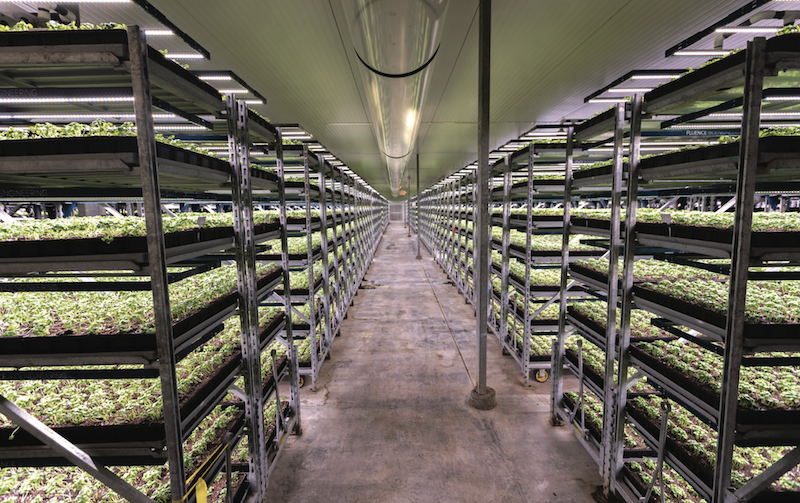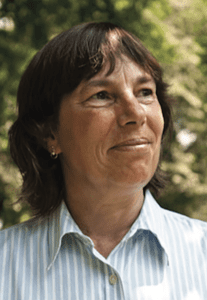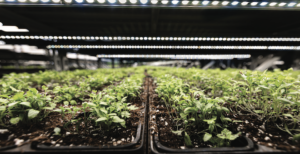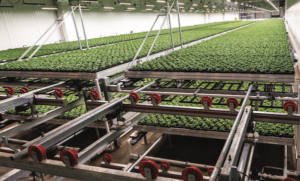
Mar 3, 2022
Soli Organic thrives at indoor, in-dirt organic growing of herbs, greens
Sustainability and technology help Soli Organic Inc., more efficiently grow and ship a wide variety of fresh and locally-grown organic produce from indoor controlled environment agriculture (CEA) operations. Soli has developed one of the nation’s largest commercial indoor organic growing systems.
Formerly known as Shenandoah Growers, the Rockingham, Virginia, company changed its name in late October. The rebranding should help Soli, which markets itself as one of the leading U.S. growers and marketers of indoor-grown fresh organic culinary herbs and leafy greens, provide sustainable, 100% USDA certified organic, regionally grown produce to more consumers.
Soli markets its products, which include organic lettuces, microgreens and purees, under the That’s Tasty Pure Organic Flavor label. More than 20,000 supermarket retailers carry Soli’s products.
A philosophy of growing
Soli’s growing practices are planted in a philosophy that employs proprietary crop production methods that help the grower produce CEA products at affordable prices.
“While there are a number of companies working to grow food indoors, it can be a costly enterprise, forcing many to charge a premium for their products,” said Ulf Jönsson, chief technology officer. “At Soli, we’ve been able to create efficiencies that enable us to grow food indoors at scale and sell our organic herbs and greens affordably – often at the same price point as conventional alternatives.”

Soli’s roots began with USDA-certified organic field agriculture. The company was founded in 1989 as Shenandoah. Around 2010, it began to transition from outdoor field to controlled-environment production, the first produce category leader to do so, according to Soli. Soli decided to tackle the challenge of bringing nature indoors by exploring a shift to indoor CEA.
The company’s move to CEA was fueled by a desire to mitigate business risks caused by climate change and extreme weather events. Other factors included dependence on an inconsistent labor force, pathogen outbreaks and food loss occurring in harvesting and transportation. By growing indoors, Soli is able to carefully control all aspects of the production process and minimize the risks of climate volatility and other factors.
Soli’s “biology first, technology to scale” growing philosophy is reflected in its drive for employing sustainable solutions in its agronomic practices. “While many CEA developers use technology as their starting point, our position as longtime horticulturists is to first achieve optimal growing conditions for the plants, and then turn to technology as a tool to reach low cost in production,” said Tessa Pocock, chief science officer.
CEA production
Soli produces herbs and greens in seven indoor growing facilities spread across the country. Eight additional facilities are scheduled to be constructed in the coming years as the company continues to expand operations to meet growing demand. Soli distributes fresh local organic produce through a nationally integrated platform of farms, production and logistics facilities.
A new financing arrangement with Decennial Group, an investment management and development platform, is supporting the construction of three of the facilities, including one recently announced in Anderson County, South Carolina. Though Soli declined to state locations of its growing operations, the facilities are strategically located around the country as “a reflection of our commitment to making organic produce accessible to all,” according to Soli.
Sustainability and environmental stewardship remain the core of Soli’s mission. “While our decision to transition to indoor controlled environment agriculture was driven by a desire to mitigate the risks posed by climate volatility and supply chain disruptions, it has also opened up a wide range of opportunities for us to drastically reduce our environmental footprint, ensuring that the food we’re producing is not only fresh and affordable but sustainably grown as well,” said Pocock.
 Soli works to improve operations, including advancing new technologies and growing practices to reduce its environmental footprint.
Soli works to improve operations, including advancing new technologies and growing practices to reduce its environmental footprint.
The use of real living soil distinguishes Soli from other indoor growers. Most CEA operators employ hydroponic growing methods that depend on rockwool, an inert material sent to landfills. Soli, however, is able to reuse 95% of the 200 cubic meters of soil its uses on a weekly basis.
“The key to our success in achieving scaled production of high-quality, indoor-grown organic produce has been the development of a proprietary biology and technology platform which has enabled us to grow food indoors, in soil,” said Jönsson. “Soli’s use of soil, combined with our revolutionary in-house nitrogen production process, has unlocked countless benefits, which ultimately allow for reduced environmental impact and production costs.”
Soli is managing climate conditions in a way that’s better for plant growth and requires less energy use. Its airflow systems provide the plants ideal temperatures required for effective and steady growth while creating significant energy efficiencies by reducing the need for cooling power, said Pocock.

More with less
Moving to indoor production has also reduced Soli’s land footprint, allowing Soli to grow more produce on a smaller amount of land. Soli’s 100,000-square-foot facilities mimic the equivalent of 300 acres of outdoor farmland. Those facilities produce approximately 3 million pounds of fresh product, according to Soli.
Seeking to reduce energy use, Soli is also tackling solving LED lighting challenges. An energy-efficient LED growing system provides an energy source for its crops. In addition to energy efficiencies, Soli’s LED lighting provides a much smaller land footprint because it can grow in vertical layers, allowing for up to seven times more plants to be grown in the same footprint, according to Soli. Its growing techniques also use up to 90 percent less water than conventional growing methods.
Soli’s indoor farms maintain start to finish control over all aspects of the growing process, from seed planting to packaging and logistics. This management provides quality control benefits as well as production efficiencies and helps the company increase its capacity to meet enlarging demand.
The key to the future of the organics sector is cost-competitiveness, something even more important for indoor growers. Through technology, Soli has achieved large reductions in unit grow costs, up to 70% lower than field-sourced production, according to Soli. Capital expenditures of $5-$7 per pound of annual production capacity is the lowest among indoor agriculture companies, while Soli’s unit costs for indoor production are at or below field production, according to Soli.
R&D programs work to improve Soli’s growing system. “We remain committed to this idea of continuous improvement, not only to reduce costs and produce high-quality food, but to continue to improve our environmental footprint,” said Jönsson. “Beyond environmental impact, automation and localized production centers allow for reduced food contact and fewer opportunities for contamination.”
Given the opposite trends of a dwindling global food supply and increasing global demand for fresh and accessible produce, such growing practices utilizing technology are critical to feeding the generations of the future, said Soli.

Outdoors and organics
Soli also sees value in field production. “While the decision to move to indoor production made sense for us, we’re firmly of the belief that it will take both sustainable indoor and outdoor production methods to meet the growing global demand for produce, particularly during a time of increased resource volatility and climate risk,” said Pocock. “Soli is excited to play a key role in that equation going forward.” Over the next few years, Soli expects to complete its transition to majority CEA production.
The move to more sustainable production methods was timely. “Increasingly, we’re seeing climate volatility posing significant threats to the agriculture supply chain, not only here at home, but also around the world, making the prospect of scaled indoor agriculture that much more important,” said Jönsson.
“CEA presents a significant opportunity for our food system to be shielded from some of those climate-related risks like droughts and wildfires, and Soli is working to make that a reality,” said Jönsson.
Soli looks to future crops. Following the lead of its consumers, Soli’s biofarm model was designed to grow any type of crop, from leafy greens to berries to tomatoes to peas and others. And Soli remains optimistic about organics.
“We see organic food production as incredibly important, especially as consumers have become more conscious about what they eat and are increasingly not only cooking at home, especially in light of the COVID-19 pandemic, but also seeking out healthier ingredients,” said Pocock.






